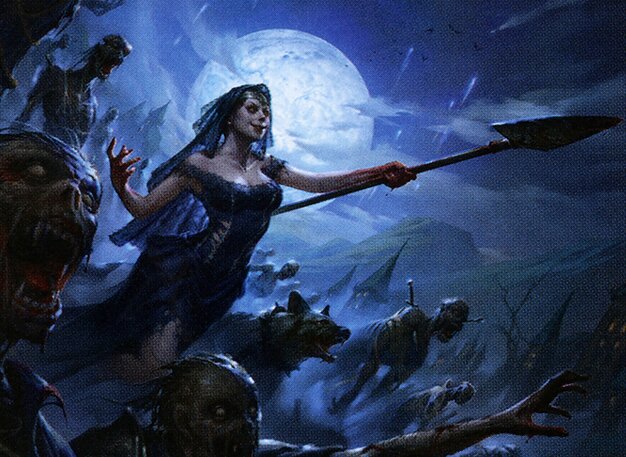I ran the conclusion of Ghoul’s Night Out for my players, my Monster of the Week one-shot adventure that I prepared in a previous post. They bested the monster and saved the would-be human sacrifices. Best of all, my players liked the premise so much that we agreed to a regular Monster of the Week game. This post I’m going to briefly discuss what worked and what didn’t from my prep. I will also explore how I can transition from a one-shot to a campaign. Do you GM Monster of the Week? Send me your tips and observations on Mastodon: @[email protected]
The Strong Start Delivered
Last time I prepared a confrontation with a group of cultists. The scene worked very well cinematically, and it set the tone I wanted. The cultists walked in after magically tracking one of the PCs to the team hideout. They questioned three PCs while the fourth whom they had tracked was in the bathroom. As tempers flared, everyone heard a toilet flush and the PC in question strolled into the middle of the room.
My players got a kick out of the scene. They dealt with the cultists creatively and after gathering some more information moved on to an assault on the cultists hideout.
The strong start not only engaged the table in the game but reminded the players of important plot points from the first session. So, big plus there.
New Table Tools
Last time, I ran the adventure pretty much from memory. I didn’t use a GM screen, either. While I’m generally good about improvising details, I found that I floundered on coming up with names when my players decided to talk to random people. This time I brought a sheet of random names that I ripped off from the white pages. I had it on the table in front of me and got to use it a few times.
I also made a mini GM screen, 8 inches high, with descriptions of the player moves and GM moves. This really helped me adjudicate dice rolls without getting buried in my notes. Also, I could leave my notes on the table in front of me instead of putting them inside a manila folder.
On the table in front of me I had the GM screen, the list of names, the adventure outline, and a GM copy of the area map. It wasn’t so much paper that I had to search to find anything.
Conversion to a Limited Campaign
My players told me they wanted to continue with Monster of the Week in the current setting. This means I need to get out of the one-shot mindset and make some changes to make a campaign. Specifically, this means coming up with a good plot arc to connect our subsequent four-or-so monster hunts. Once we solve the plot arc, we can retire the campaign.
Why limit the campaign to single plot arc? I like MotW all well and good, but it has some mechanical limits. In particular, once players make rolls with a +3 bonus or higher, their characters reliably succeed without complications. This is already happening at my table. One player started off with a +3 in weird and two of the three other players took ability score increases as their playbook advancements.
I can limit this by encouraging players to make rolls outside their character competencies, reminding them that a miss can make for a fun scenario, and they’ll earn XP to boot. Realistically though, they’re going to try to maximize their chances of success. It’s what the hunters are supposed to do.
A limited campaign will focus me on getting the players to a meaningful conclusion rather than have us play out episodes until the characters become too powerful for the game to hold. My meta-goal with this group is to complete our Monster of the Week campaign and then move on to another system like Blades in the Dark or D&D. To get there I need to keep forward momentum.
Creating a Campaign Goal
The player characters are a band of monster hunters dedicated to protecting their hometown from things that go bump in the night. The general public doesn’t know about them. The police know about them but think they’re harmless eccentrics chasing shadows. Our first adventure, Ghoul’s Night Out, ended with a return to the status quo. Let’s start by giving ourselves the liberty to upend the status quo and let the world run wild. The players may still want to keep the public ignorant of the unnatural threats out there, but I won’t scale the challenges to be so easily contained.
I like the thought of their hometown having some feature that attracts all the weirdness. Maybe a bunch of ley lines cross there and that just attracts stuff? Our game is set in coastal California, so perhaps there’s an Atlantis-like sunken city right off the coast that’s full of weird energies. Continuing with the California theme, maybe some forgotten expedition was transporting an arcane Olmec artifact up the coast and lost the dang thing. The artifact exudes a strange influence on the area which attracts weirdness. And so on.
Then it hit me, all the above plus. The strange influences of each individual feature combined to weaken the fabric of reality and an eldritch horror is pushing though a widening rift. Boom. We’ve got our campaign goal–close the rift and prevent the horror from destroying the world.
Character Focused
Now that I have a campaign goal, I can focus each hunt leading up to it on one of my characters. I can use character hooks the players have provided as motivation to investigate and then reveal the campaign goal through loose ends.
For example, one of my players is playing the Wronged. He hates vampires because he said one seduced away his character’s fiancée. Sure, it’s an overplayed trope, but l bet we can work with it. Let’s connect this vampire to our Olmec artifact from before. The vampire began life as a conquistador who found the artifact. While trying to recover the artifact he was turned. After some vampire-ing around, he wound up in Alta California. Years later he commissioned the expedition that went to retrieve the artifact. The PC’s ex-fiancée can be the great-niece of the expedition leader. The vampire has been hunting for the artifact and she is the key to finding where the artifact went missing. When the party reaches the artifact they find ooze-y cosmic horrors around it. Huh, where did those come from?
Okay. It’s a rough outline that needs work. The important thing is that it bridges character motivation and the campaign arc. However, it gives my session prep direction. As I prepare each session here, I’ll include a character spotlight and a campaign arc piece.
Next time we’re going to take a break from Monster of the Week and turn to Mophidius’s 2d20 system for Star Trek Adventures. I’m playing in a STA campaign right now and wrote an adventure to run for my group when our GM wants to take a break. It’s a classic Star Trek bottle episode. I’ll give my thoughts on STA and share the adventure next time. If you want to chat about Monster of the Week campaign arcs or have tips for how to keep the game from becoming a boring string of full successes message me on Mastodon @[email protected]
Feature Image “Ghouls’ Night Out” by Fajareka Setiawan copyright 2021 Wizards of the Coast

